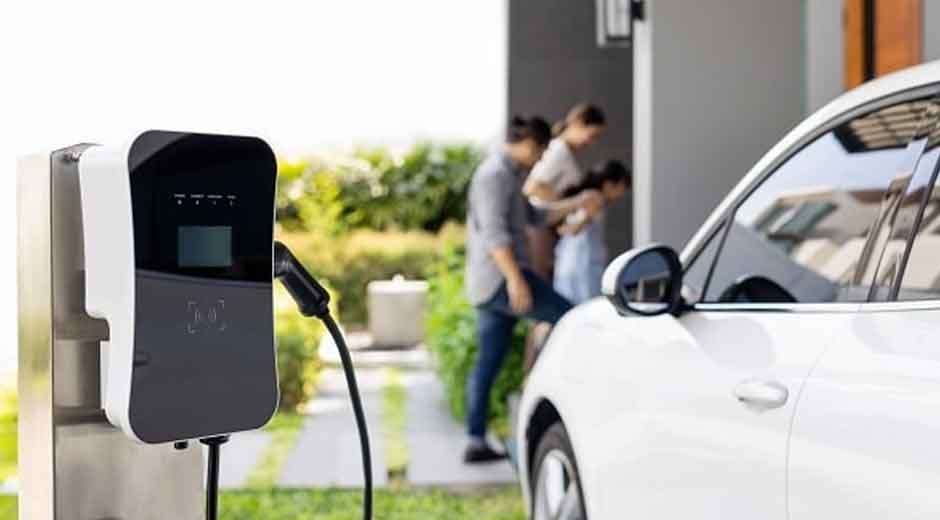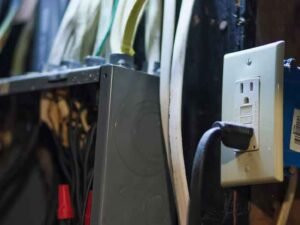As electric vehicles continue to grow in popularity, homeowners are increasingly investing in home charging solutions for convenience, efficiency, and cost savings. The role of residential electricians has expanded significantly as they handle the installation, setup, and maintenance of these charging systems. Ensuring proper installation is crucial not only for performance but also for safety and long-term reliability. Electricians follow a detailed, methodical process that integrates advanced wiring techniques and system diagnostics to make sure the charger functions properly. We will explore how residential electricians install and service EV charging stations, from initial assessments to ongoing maintenance.
The Step-by-Step Process of Installing and Servicing EV Charging Stations
- Initial Home Assessment and Electrical Evaluation
Before installation begins, residential electricians conduct a comprehensive home assessment to determine if the electrical system can support an EV charger. As part of providing electrical services in Havertown, they inspect the main electrical panel, check the available amperage, and identify whether the existing setup can handle the additional load. If the system is outdated or undersized, an electrical upgrade may be required.
During this stage, electricians also assess where the charger should be installed—typically in a garage or near a driveway—to ensure accessibility and protection from environmental elements. Safety is a primary focus, so they verify grounding, wiring quality, and circuit integrity to ensure optimal performance. This careful evaluation prevents electrical overloads and ensures that the homeowner can charge their vehicle efficiently without tripping breakers or causing damage to the home’s electrical infrastructure.
- Selecting the Right Charger and Installation Location
Once the home’s electrical system has been reviewed, electricians help homeowners choose the right EV charger. The two most common types are Level 1 and Level 2 chargers. A Level 1 charger uses a standard 120-volt outlet and is slower, while a Level 2 charger operates on a 240-volt circuit and offers faster charging times. Electricians recommend the most suitable option based on driving habits, vehicle type, and energy consumption patterns. The charger’s location is also carefully planned to ensure convenience, proper cable reach, and compliance with local codes. Some homeowners may prefer wall-mounted stations, while others may opt for pedestal-style units. The placement must also consider ventilation, distance from power sources, and overall safety for both the user and the electrical system. Electricians ensure every aspect meets regulatory standards before proceeding with the physical setup.
- Installing Dedicated Circuits and Wiring
One of the most critical aspects of EV charger installation is running a dedicated circuit. Residential electricians install a new circuit breaker in the home’s electrical panel to prevent overloading existing systems. Using high-quality, appropriately rated wiring, they connect the charger to the panel in accordance with the manufacturer’s specifications. Electricians also use conduit or protective casing to shield wiring from wear and exposure, especially in garages or outdoor spaces.
Proper grounding is essential to prevent electrical faults, ensuring the grounding wire is securely connected to both the charger and the main panel. Throughout the process, electricians test voltage and current flow to verify that the circuit can handle the expected power draw without fluctuation. This level of attention ensures consistent and efficient charging, helping to prevent long-term wear on the vehicle’s battery and the home’s electrical components.
- Mounting and Connecting the Charging Unit
After wiring is completed, electricians mount the charging unit in the chosen location. Wall-mounted chargers are secured using heavy-duty anchors, while pedestal units are installed on stable bases. Once positioned, the charger is connected to the dedicated circuit and tested for operational safety. Electricians ensure that all connections are tight and properly insulated, reducing the risk of short circuits. They also calibrate the charger according to the manufacturer’s setup procedures, confirming the correct voltage output and communication between the charger and the vehicle.
For smart chargers, electricians assist in configuring Wi-Fi connectivity and integrating the system with mobile apps for remote monitoring and control. They may also set up energy usage tracking to help homeowners optimize charging times based on utility rates. Once everything is operational, electricians perform multiple test charges to confirm stable performance under normal operating conditions.
- Ensuring Safety Compliance and Code Verification
Compliance with local building codes and safety standards is a vital step in the installation process. Residential electricians are well-versed in the National Electrical Code (NEC) requirements for EV charging systems, which dictate specifications for circuit protection, grounding, and load management. After installation, they double-check all connections, wiring gauges, and breaker sizes to ensure full compliance with the standards. Some jurisdictions may also require inspection by a local authority before the system becomes operational.
Electricians prepare all necessary documentation and assist homeowners during this process. Meeting these standards not only ensures legal compliance but also provides peace of mind knowing that the system is safe to operate. Additionally, electricians educate homeowners on safe charging practices, such as avoiding overloading the circuit or using extension cords with high-current devices. This ensures long-term reliability and reduces the risk of electrical hazards in the home.
Residential electricians play a crucial role in facilitating the transition to electric mobility. From evaluating electrical systems and installing dedicated circuits to ensuring safety compliance and providing long-term maintenance, their work ensures that every EV charging station functions reliably and efficiently. With proper installation, maintenance, and smart upgrades, homeowners can enjoy the benefits of convenient, safe, and cost-effective charging right from their garages—contributing to both environmental sustainability and the evolving landscape of modern living.










